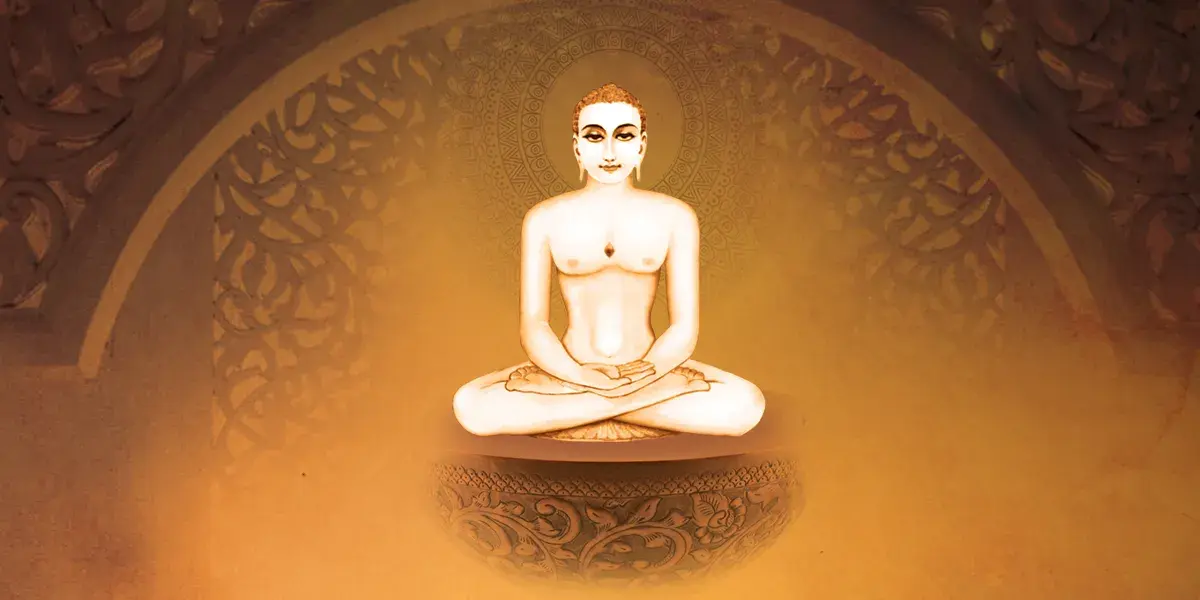Skip to main content
Tenets of Jaina Philosophy
Jaina Philosophy

1. Introduction
- Jaina Darshana is a non-Vedic philosophical system.
- Has its own canonical works and Puranas (like the Hindu tradition).
- Has a version of the Ramayana in the Jaina tradition.
- Over time, Jainas divided into two groups:
- Shvetambara (white-clad ascetics).
- Digambara (sky-clad - more or less naked ascetics).
2. Core Tenets of Jaina Philosophy
-
Pluralism (Anekantavada): Reality is characterized by multiplicity (many entities in the world).
- Contradicts the Monism of Advaita Vedanta.
-
Relativism (Syadvada): Reality and pluralism are relative to individual perspective/framework.
- Each person perceives the world through their own "spectacles."
- A single entity can be perceived differently based on perspective.
- Example: The story of six blind men and the elephant.
-
No Absolute Knowledge: Except for the Tirthankaras no one has absolute knowledge.
3. Classification of Reality
- Two broad categories:
-
Jiva: Living entities.
- Further categorized into:
- Mukta: Liberated beings, free from the cycle of birth and death.
- Baddha: Beings still in the cycle of birth and death.
- Baddha Jivas: classified into mobile and immobile entities.
-
Ajiva: Non-living entities.
- Includes:
- Pudgala: Matter; includes karma (physical matter that binds the soul)
- Dharma: Motion.
- Adharma: Rest.
- Dik: Space.
- Kala: Time.
4. Jaina Theory of Karma and Liberation
-
Cause of Samsara: The cycle of birth and death is due to karma (physical matter) attaching to the soul (atman) binding it to the body.
- Similar to how wet mud sticks to a cloth.
-
Fructification of Karma: Karma causes passions (anger, greed, etc.), which leads to more karmic particles and perpetuates samsara.
-
Path to Liberation:
- Realization of the true nature of the Jiva and the world.
- Achieved by following the teachings of the Tirthankaras.
-
Three Requirements:
-
Right Faith (Samyag Darshana): Faith in the teachings of the Tirthankaras.
- This path (readings, studies) will lead to moksha.
-
Right Conduct (Samyak Charitra): Actions and conduct as per the Tirthankaras guidelines.
- Includes:
* Ahimsa (non-violence) is of utmost importance.
-
Right Knowledge (Samyak Jnana): Clear understanding that arises from right faith and right conduct.
- Leads to a true understanding of nature of the self, world, and the teachings.
5. Ahimsa
- Ahimsa is central to Jaina conduct.
- Avoid harming anything (including insects).
- Wearing masks and sweeping the floor.
6. Three-Fold Path to Liberation
- Right Faith (samyag darshana) → Right Conduct (samyak charitra) → Right Knowledge (samyak jnana) → Liberation
7. Nature of Ignorance and Liberation
- Ignorance of the nature of reality and the Jiva takes one into the cycle of birth and death.
- Ignorance is removed through knowledge which gives the state of liberation.
- The state of liberation is achieved by following right faith, right conduct and right knowledge.


No Comments